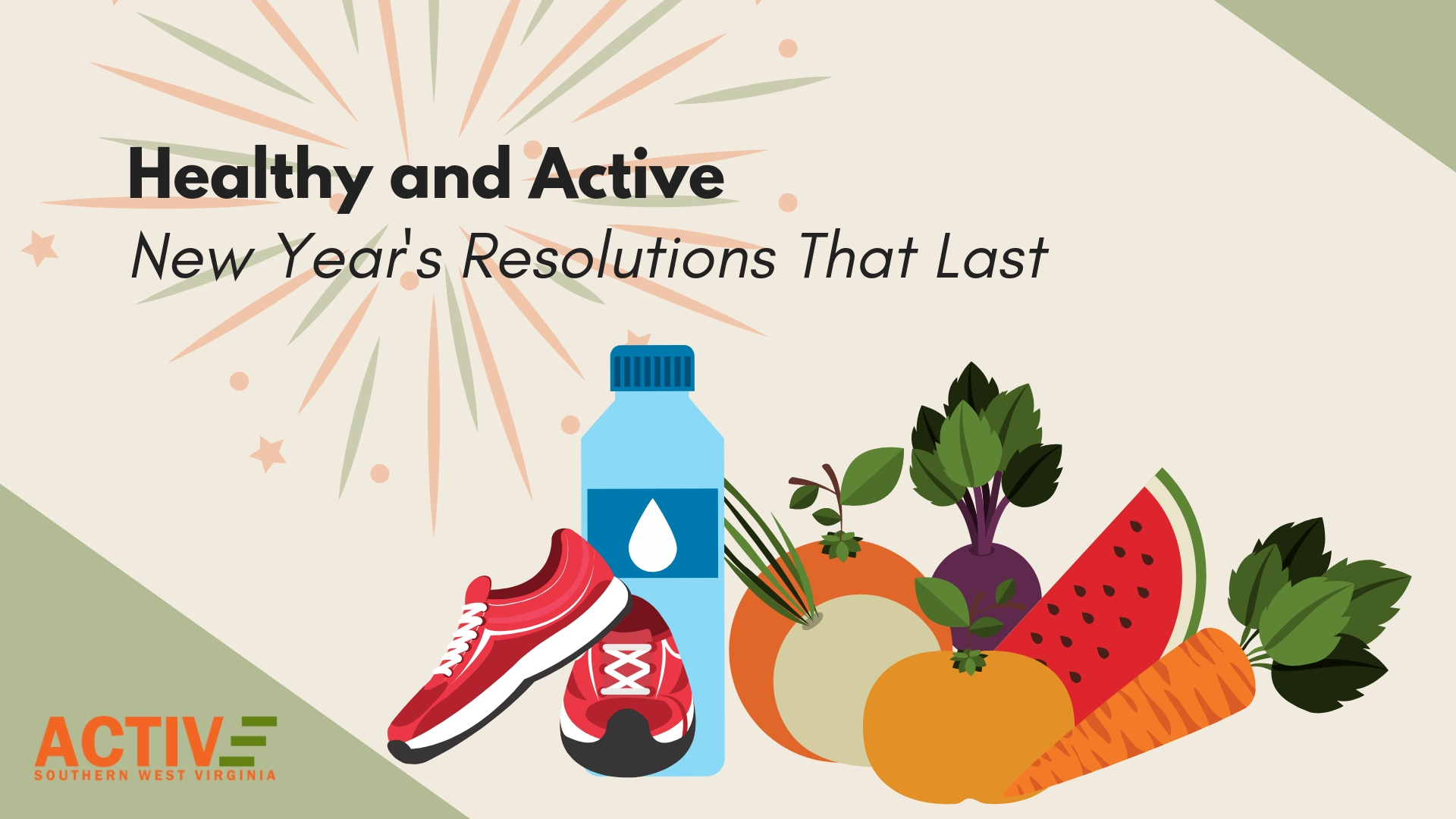
Active SWV encourages you to be thoughtful in setting healthy goals for 2019
As 2018 comes to close, we welcome in 2019 with midnight champagne, a count down and New Year’s Resolutions. Many look forward to the New year with goals to live a healthier lifestyle, be more physically active, eat healthier and feel better! The statement “I want to eat healthier in 2019”, has good intentions, but is oftentimes is hard to define and results in crash diets that are unsustainable and unsuccessful. So, to make your resolutions to eat healthier last, lets break it down into a few, small, bite sized goals.

Move more, sit less
New evidence shows a strong link between increased sedentary lifestyle and increased risk for heart disease, hypertension and all-cause mortality. So, set that timer at your desk and move those legs, walk to fill up your water, use the stairs, grab a co-worker and take a 5-minute stroll or even just get up for a quick stretch is beneficial. Research has shown that physical activity has instant health benefits. For example, reduction in anxiety and blood pressure and improved sleep and insulin sensitivity. Set small, attainable goals for the week and one long-term goal for the next few months. Maybe that looks like walking 20-30 minutes a day (this can be done in 3, 10 minute increments), or participating in one of our free programs found here, https://activeswv.org/events/monthly-program, or maybe its running 3 miles, 3-5 times a week. Next set a long-term goal, such as participating in a 5k walk/run. The next one coming up for Active SWV, is the Polar Festival 5K Walk/Run , on February 2nd, and its free! Check out details here. This would be a great goal to shoot for and we’d love to see you there and support you in your goals to achieve a healthier more active lifestyle.
Reduce your sugar consumption one bite at a time
One step to reduce sugar intake is to limit sugar sweetened beverages (SSB). These include soft drinks, fruit drinks and energy and vitamin waters. SSBs are at the top of the list for calories and added sugar. Healthier alternatives to SSBs is to select sparkling water, coffee, tea or 100% fruit juice (<8ounces/day). Another option is to jazz up your water with fruit and herbs, like cucumber and mint, lemon, berries or make your own frozen fruit cubes.
Yogurt can be another deceptively sugar laden product. The typical vanilla yogurt is chock full of sugar and we didn’t even realize it, thinking we were incorporating something healthy into our diet. Yogurts labeled non-fat or low-fat have additional sugars to simply enhance their taste. The average yogurt has ~13g of sugar, which equals 3 sugar packets. Aim for a yogurt <7g sugar per 8ounce serving, or better yet plain Greek yogurt with personalized toppings. One thing I like to do is purchase plain Greek yogurt (Greek has more protein) and dress it up with, vanilla, 1 teaspoon of honey or maple syrup, fresh or frozen fruit, grape nut cereal for an added crunch and a sprinkle of cinnamon, which has been thought to help lower blood sugar as well as inflammation.

Don’t be tricked, low-fat products are not the answer to healthier eating habits
In the 1980s the low-fat craze took over and Americans continued to get heavier than ever and overall health declined. Products lower in fat equal higher sugar content and less satiety. So, check out the sugar content before buying a non-fat or low-fat item, you may find that the full fat option is the healthier one. Fat helps us feel full, aids in metabolism and helps our bodies absorb certain vitamins (ADEK) that we need to be healthy, so no, fat is not bad! Not all fats are created equal. There are healthier fats to choose, such as, avocados, nuts and seeds, olive oils, salmon and cheese. So, don’t make fat your enemy, what’s more significant is not the amount of fat we eat, but the type of fat we eat. Check out this video, https://youtu.be/4xiaB9RNT1E.

Try new recipes and incorporate more vegetables 1-2 times a week
This can seem overwhelming at first, but there are sites to look for with the ingredients you already have on hand, for example, https://www.supercook.com/#/recipes. Unless your ambitious, skip the complicated, Pinterest recipes and stick to something simple with flavors you and your family like. Eating a home cooked meal 90% of the time is healthier than take away. The portion sizes at restaurants are typically two to three times more than recommended by the US Dietary guidelines and copious amounts of salt are added to enhance flavor (extra salt plays a role in high blood pressure also known as hypertension).

